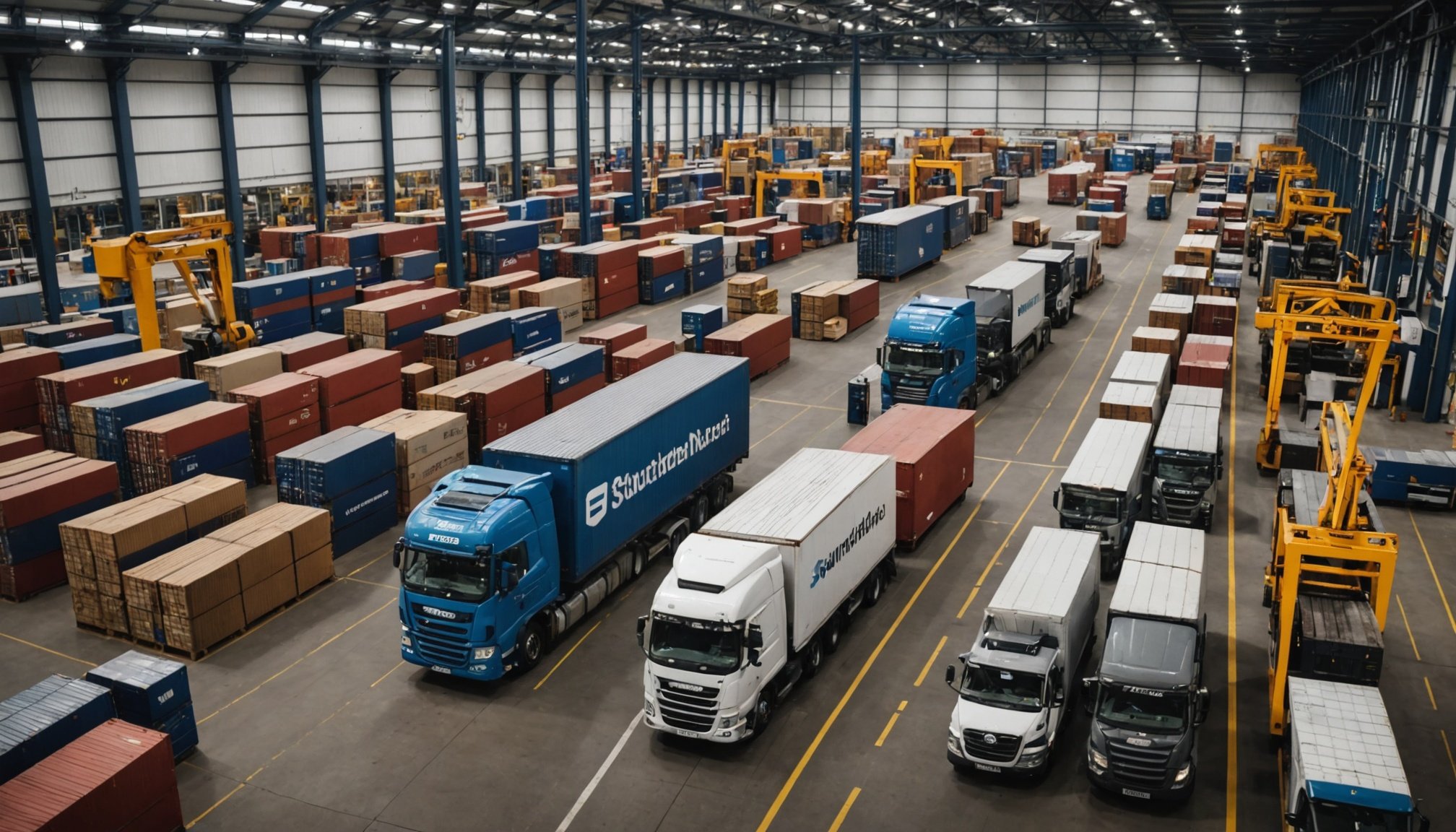Technology Adoption
The UK logistics sector is undergoing a remarkable transformation, with digital technology at the forefront. Automation plays a pivotal role, enhancing efficiencies and reducing human error. Software solutions streamline processes, allowing for seamless management of complex operations. Cloud computing, meanwhile, offers flexibility, enabling companies to scale operations and collaborate remotely.
Benefits of automation and cloud solutions are abundant. Automation expedites tasks that traditionally required manual input, such as sorting and inventory management. It allows logistics firms to allocate resources more effectively and respond swiftly to market demands. Cloud solutions extend beyond mere storage; they foster innovation by enabling real-time data access and facilitating communication across multiple locations.
This might interest you : Strengthening Client Relationships: Effective Strategies for Bristol-based Accounting Firms
However, integration of these technologies presents challenges. Organizations must consider cybersecurity measures to protect sensitive information. Additionally, there’s a need for system compatibility to ensure seamless operation without disruptive transitional issues. A strategic approach, weighing both benefits and potential risks, is imperative for successful adoption.
In this digitally driven landscape, logistics firms are encouraged to embrace these technologies. With carefully planned implementation, enhanced operations and competitive advantage can be achieved, maintaining relevance in a rapidly evolving industry.
In the same genre : Accelerating Product Innovation: Leveraging Machine Learning Breakthroughs at a Leading Tech Company in Bristol
Workforce Training
The logistics industry requires a focus on employee training and skills development to meet ever-evolving demands. As digital technologies such as automation and cloud computing reshape processes, upskilling employees becomes vital. Companies must invest in continuous learning to ensure workers are proficient with new systems and adherent to industry standards.
Implementing effective training programs involves strategic planning. Start by assessing current skills gaps and aligning training with future needs. Employ a mix of online courses, workshops, and hands-on training to cater to diverse learning styles. Additionally, leveraging partnerships with educational institutions can provide access to specialised courses designed for the logistics sector.
Continuous learning not only benefits employees but also the company. A well-trained workforce enhances operational efficiency and productivity, reducing the reliance on external expertise. It fosters a proactive culture where employees are prepared to tackle technological advancements confidently.
Moreover, encouraging employee input in training development and promoting a culture of shared learning can increase engagement. By creating opportunities for skills development and promoting further education, firms not only retain talent but also attract new, technologically adept professionals. An investment in people is an investment in the company’s future, ensuring competitiveness in a rapidly evolving industry.
Change Management
A successful change strategy is crucial for navigating the digital transformation of logistics operations. It requires a deliberate and structured approach to managing shifts in technology and processes. Effective change management involves fostering a resilient organizational culture that embraces innovation and adaptability. By promoting open communication and encouraging flexibility, companies can smooth the transition to new systems.
Stakeholder engagement plays a pivotal role in this process, ensuring all parties are informed and invested in the transformation journey. Clear communication and inclusive planning help address any concerns and align goals across the organization. Engaging employees, partners, and customers in the change process builds trust and commitment, reducing resistance and enhancing collaboration.
Leadership is another key component in driving successful change management. Leaders must champion the transformation by setting clear objectives and providing the resources necessary to achieve them. They should model the desired behaviours, motivating teams to embrace new technologies and methodologies.
To facilitate a seamless transition, companies should adopt the following best practices:
- Develop a comprehensive change management plan detailing objectives, timelines, and responsibilities.
- Communicate consistently and transparently.
- Provide training and support to ease the adoption of new tools and processes.
By implementing these strategies, logistics firms can effectively manage change, ensuring sustainable growth and continued relevance in the industry.
Data Analytics
In the logistics sector, leveraging data analytics is critical for making informed, data-driven decisions. This approach allows firms to gain insights into operations, optimize processes, and enhance customer service. The use of diverse analytics tools enables real-time monitoring and evaluation of performance metrics, such as delivery times and resource utilization, which are pivotal for strategic planning.
Emerging technologies have broadened access to business intelligence platforms that convert raw data into actionable insights. These tools offer dashboards and reports that simplify complex data analyses, facilitating quick decision-making. Implementing these technologies involves understanding specific logistics needs and customizing solutions to fit organizational goals.
Successful data-driven strategies often involve case studies that illustrate practical applications within the industry. For instance, a logistics firm utilizing performance metrics for route optimisation reduces fuel consumption and cuts costs. Such successes provide a framework for others aiming to harness analytics for improved efficiency and customer satisfaction.
Performance metrics also serve as benchmarks, setting standards for continuous improvement. By analysing historical and current data, logistics firms can predict trends, identify potential issues early, and adapt operations accordingly. With these insights, businesses can stay ahead of competitors and ensure the long-term viability of their operations.
Customer Engagement
Cultivating a strong focus on customer engagement is pivotal for logistics firms aiming to enhance their competitive edge. Effective strategies revolve around creating a meaningful customer experience through digital innovations. A robust method is the incorporation of user-centered design aimed at tailoring services to meet client needs precisely. This design philosophy places customers at the heart of service delivery, ensuring usability and satisfaction.
Involving customers directly can lead to insightful enhancements. This is where feedback mechanisms play a crucial role. Gathering regular input from the clientele allows firms to adjust services and products promptly, fostering a climate of continuous improvement. These mechanisms could include surveys, direct dialogues, or digital feedback platforms.
Furthermore, relationship management is integral to sustaining customer satisfaction. By building trust and open communication channels, companies can ensure long-term client loyalty. Engaging actively with customers helps preempt potential service issues and offers the opportunity for proactive solutions. This connection is not only beneficial for problem-solving but enriches the overall customer experience.
These strategies solidify a firm’s capability to deliver top-notch service. As logistics operations increasingly digitalize, embedding these customer engagement practices will secure enduring relationships and enhance business growth in a competitive market.
Real-World Examples
Recent case studies in the UK logistics sector highlight how firms are successfully navigating digital transformation. Industry leaders are setting benchmarks with pioneering approaches. For instance, the adoption of automation and cloud computing has led to profound operational efficiencies. By integrating these technologies, firms have significantly reduced human error and streamlined processes, setting the stage for success stories.
Examining these examples, we see common threads in the best practices employed. Companies prioritising a comprehensive technology adoption strategy, emphasising system compatibility and cybersecurity measures, achieve seamless transitions. Alongside, robust employee training initiatives ensure workforce adaptability, facilitating new technology integration without disrupting operations.
A notable success story involves a leading UK logistics company that redesigned its logistics operations by utilising software solutions for enhanced data analysis. This shift has empowered the firm to optimise delivery routes and improve overall service efficiency. Lessons from these instances underline the importance of a strategic, well-planned approach to adopting digital technologies. Firms can draw from these experiences to inform their own transformation journeys, ensuring competitive advantage and sustained growth in an ever-evolving industry landscape. Insightful adaptation to change emerges as a crucial factor.











